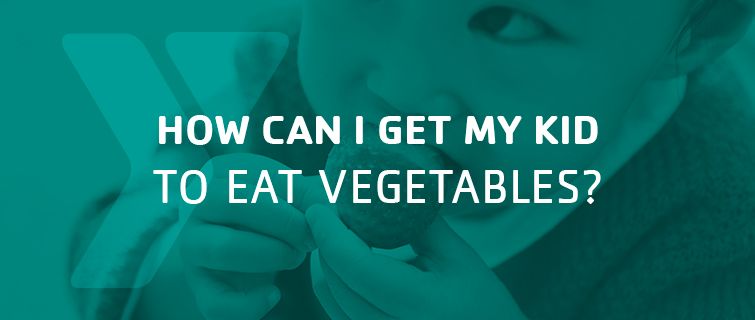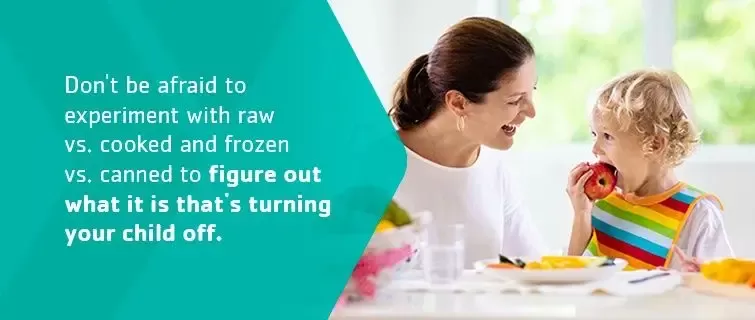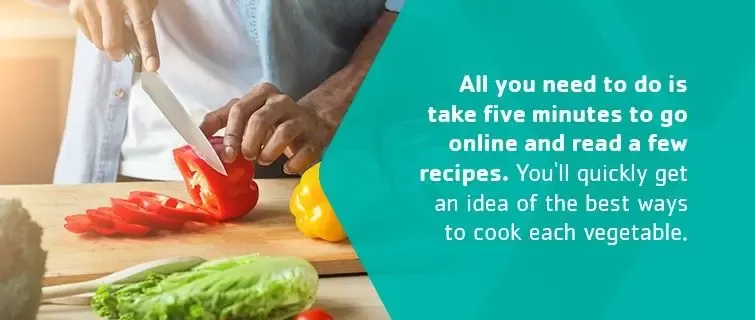
Children today don't eat all the vegetables they need for a healthy diet. This probably won't come as a shock to any parent who has spent their dinner hour arguing, pleading and bargaining with their child over a serving of peas or carrots. Your child hates veggies, but you know that vegetables are part of a healthy diet, especially for growing children.
So what's a parent to do?
How to Get Your Child to Eat Vegetables
Wondering how to get children to eat veggies? There are a few things to remember:
1. Set a Good Example
Before you can convince your child that those green beans are delicious and nutritious, they need to see you eating them. Take a close look at your own daily diet. Are you consuming the recommended amount of veggies each day? And, perhaps even more importantly, is your child seeing you consume — and enjoy — them? If the answer to either of these questions is "no," then start by changing your own habits.
2. Stock the Fridge
The U.S. Department of Agriculture (USDA) recommends that children and adults consume 2.5 cups of vegetables each day. But that doesn't mean you should just chow down on a whole lot of brussels sprouts. Stock up on vegetables in a variety of colors, including dark green, orange and red, especially traditional veggies kids will eat like carrots and peas. Besides providing a wide spectrum of nutritional benefits, having options allows children to identify which vegetables they do and don't like. Although fresh vegetables are a great option, frozen and canned vegetables also offer a variety of nutritional benefits.
3. Don't Give Up
Studies have suggested that it can take a child as many as 10 tries before they determine that they like a specific food. If your little one turns his nose up at avocados on the first taste, don't stop putting a small amount in front of him. Maybe he'd prefer his avocado in slices. Or maybe mashed is better. Many times children hesitate because something is unfamiliar, not because they think it's "gross." The more they see it, the more familiar it becomes and the more likely they are to learn to enjoy it.
4. Pay Attention
Children have likes and dislikes — just like you do. If you've tried avocados many times and your child continues to gag or turn them down, then maybe they truly don't like avocados. This doesn't mean they dislike all veggies. It just means it's time to try something else, like carrots. Or, it could mean that they don't care for the way they're being served. For example, some children may prefer raw veggies over cooked ones. Others might like their avocado served as guacamole. Don't be afraid to experiment with raw vs. cooked and frozen vs. canned to figure out what it is that's turning your child off.
5. Make Age-Appropriate Choices
If you have younger children, it's important to remember that they may not be able to properly chew raw vegetables. Avoid handing them carrot sticks or strips of bell pepper. When it comes to the best vegetables for toddlers, cooked or soft veggies are best. This prevents choking and unpleasant associations with these veggies. Instead, serve them soft, cooked veggies cut into bite-sized pieces. Another great thing about this strategy is that the smaller and softer veggies can be hidden inside of foods your child does like, such as mashed potatoes or applesauce.
6. Don't Be Afraid to Sneak Veggies Into Food
Your ultimate goal is twofold — healthy kids who love to eat veggies without being forced. If serving plain vegetables isn't working, try pureeing vegetables and then incorporating them into other foods like mac and cheese and tacos. The internet is full of recipes for incorporating vegetables into kid-friendly foods, but dieticians say this should be done in moderation. If children don't learn what vegetables taste like, then they'll never develop a taste for them. They'll know they like tacos, but as adults, they may not know mom's tacos incorporated cauliflower puree. So, if you opt to go this route, don't stop serving veggies on their own. Over time, as your children identify vegetables they like and develop a taste for them, you can slowly ease away from purees.
7. Make Veggies Fun
Serve celery with peanut butter and raisins — ants on a log — or serve carrot sticks with a side of Greek yogurt dip. Try getting your child involved in meal preparation. When children help prepare the food they eat, they're more likely to try it. If you have a picky eater who refuses to put broccoli near her mouth, engage her in preparing it. Odds are she'll be so proud of her handiwork that she'll be willing to give it at least one bite.
8. Don't Offer Alternatives
If your home is full of sugary snacks and drinks, your child will likely rely on those to fill their stomach. We're not saying you can never buy ice cream or a popsicle, but make sure your healthy food options far exceed the unhealthy ones. Offer healthy — and vegetable-based — snacks after school, after sports practices and while you're at the park. If children are accustomed to healthy options, then you don't have to spend as much time fighting with them over the unhealthy ones.
9. Get Creative
Life is busy. It's tempting to throw a bag of frozen brussels sprouts into the microwave and serve them up. But if your child turns up their nose at them, consider taking a few extra minutes to prepare them a different way. It could be as simple as adding a small amount of salt and pepper before you serve them. Or, maybe you could try roasting them on a baking sheet in the oven rather than steaming them. If you aren't sure how to bring out the best flavors in a certain vegetable, don't worry. You don't have to be Julia Child to make some really great food. All you need to do is take five minutes to go online and read a few recipes. You'll quickly get an idea of the best ways to cook each vegetable.
10. Don't Get Discouraged
Children's preferences and tastes for certain foods change as they grow. What they hated six months ago can easily become their go-to food now. But making them feel bad because they won't eat something or stressing about their health isn't going to help them learn to eat — and enjoy — vegetables. Be patient with them. Give them plenty of exposure to a variety of vegetables. Encourage healthy choices. Then sit back and enjoy watching them grow up. Your children are only young once. Don't get so focused on their nutrition that you miss all the good stuff.
That being said, if you suspect that your child is struggling with a nutritional deficiency, schedule a visit to the pediatrician. They can help with meal planning and nutritional choices that will keep your child on the right track as they grow and develop.
Join the Gateway Region YMCA
Looking for more ways to help your family stay healthy and active? Find a YMCA location near you, where our friendly staff are ready to help you achieve your family and individual fitness goals.

